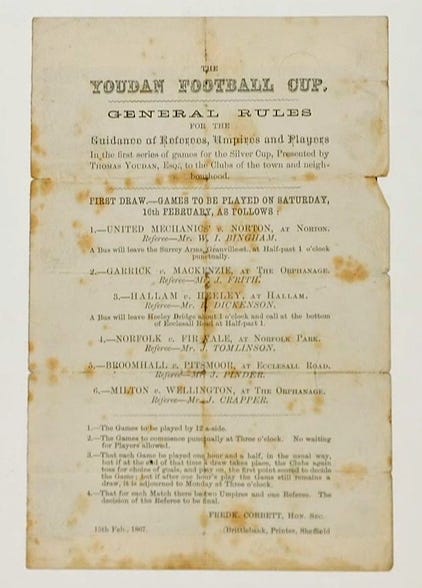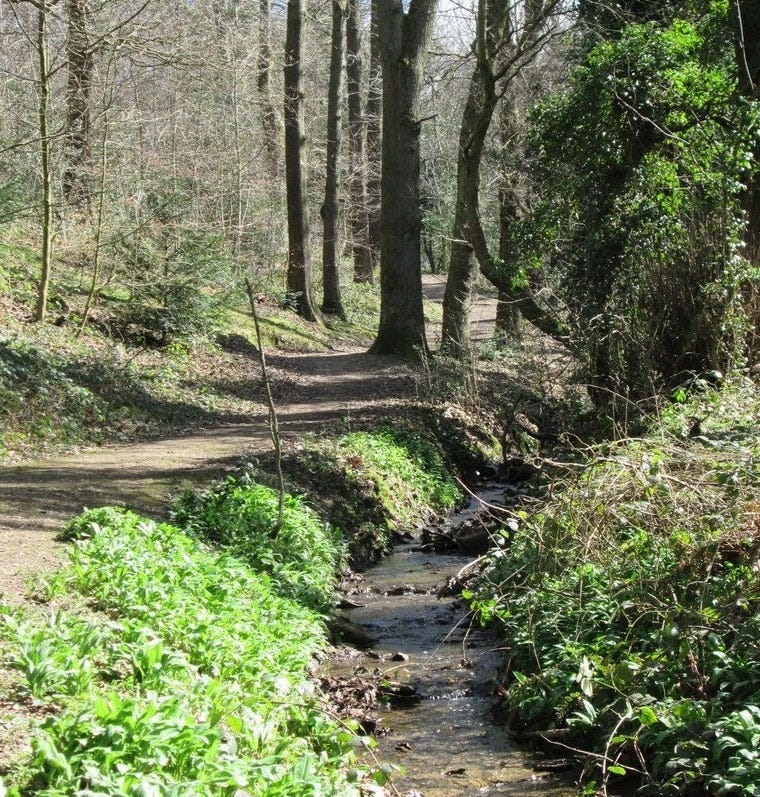We can too often take for granted the assets we have in our modern city. The many green spaces combined with the gifts to Sheffield by our benefactors, have given us many places we know today - and maybe none more so than the park that is this week’s subject. Now proud owner of the name Norfolk Heritage Park, this is a historic place on a number of levels - reflecting different layers of Sheffield’s history and heritage. The park is located in an area that a couple of centuries ago was dotted with industrial workings, then slowly became home to grand properties overlooking the town centre. As development spread across the area part of the old terrain was given over and protected for the people of Sheffield - and a long and varied story begun.
Early maps show an area dotted with coal mines and quarries. Nearby there were several mines owned by the Duke of Norfolk estate, that I have talked about recently with regards to the early tramroads that served them. Some of the earliest buildings in the Norfolk Park area were the Gin Stables, which housed horses that worked the Duke’s mines, and which still survive as private houses on Stafford Lane. The park itself was laid out on land used for ironstone mining. The area’s quarries were to last longest, with the Arbourthorne Quarry (located just above the Guildford Avenue entrance) surviving well into the last century - indeed some local houses were likely made from the nearby quarries. The map below shows the open space that became the park, before much of the development of the area and the laying out of Granville Road.
The future site of Norfolk Park in 1835 (Belle Vue Road is now Norfolk Park Road)
Successive Duke’s of Norfolk were rarely shy about naming parts of Sheffield after themselves and their families - and so we have Norfolk Park, opened on land near the Norfolk’s sometime grand residence ‘The Farm’ located a little lower down the hill. This was a very early example of a public park, being opened in 1841, and although it was located in mainly open space at the time, it was almost certain that over a relatively short period that would change. It secured a valuable (in every way) green space for future generations. There was always a grand plan for the park too, with the sweeping drives and avenues of trees, as well as large open areas. Norfolk Park opened just a few years after the Botanical Gardens, and trees and garden areas were an important factor in the plan, as well as recreation. Interestingly the site’s Historic England listing describes a report from 1855 as saying that the park is ‘even now incomplete as to the full extent of the original design’ - it appears it was a work in progress for many years, reflecting the scale of ambition.
https://historicengland.org.uk/listing/the-list/list-entry/1001302?section=official-list-entry
An early piece of history involving the park, and one largely unknown until the excellent recent work of the Sheffield Home of Football campaign, is that Norfolk Park was home to one of the earliest football clubs in the world; Norfolk FC. The club formed in late 1861, placing it in the first ten known clubs anywhere. Following the formations of Sheffield FC in 1857, and Hallam FC in 1860, there were around half a dozen clubs that started up in the town in 1861. The growth of organised football in Sheffield in the 1860s led to the world’s first proper football tournament; the Youdan Cup in 1867. Norfolk FC played, and won, two rounds of the competition at Norfolk Park in February that year on their way to the final, where they lost to Hallam FC at Bramall Lane. So, the park contains within its boundary one of the lost grounds from the very earliest football history - a great slice of Sheffield and sporting heritage.
The First Round of the Youdan Cup, February 1867
The biggest occasion in the park’s history - and surely the largest gathering of people in the history of Sheffield - was the visit of Queen Victoria when she came to the city on May 21st 1897. This was the first visit by a reigning monarch to Sheffield, and a somewhat fleeting one mainly to officially open the new Town Hall. It is interesting that the other two places she visited that day were Cammells steel works in the east end, and Norfolk Park - reflecting two different aspects of the city. Victoria and her entourage entered what is now the Norfolk Park Road lower entrance to the park, where she attended an enormous gathering of over 50,000 children who sang for her. It was reported that another 200,000 people may have been in attendance, which if true would mean over half the population of the city was in Norfolk Park that evening!
Queen Victoria had delayed several visits around the country from the previous year, so that her Diamond Jubilee year of 1897 would see the monarch visit as many places as possible. The Town Hall was long overdue an official opening too - it has an 1894 date stone at the rear of the building. The final piece in the jigsaw that led to the epic Norfolk Park event was that the Duke of Norfolk was Lord Mayor that year - everything aligned very nicely for the powers that be. It was certainly appropriate that one of Sheffield’s green spaces was utilised for the historic visit; and Norfolk Park was convenient, as well as being owned by landed gentry. The Queen went to Cammells afterwards, before re-joining the royal train to Balmoral. The Town Hall opening was widely photographed, and indeed filmed - which is the oldest surviving footage of the city. However there are very few photos of the Norfolk Park event, pictured below is one from the setting-up beforehand, and then one of the Queen’s arrival - you can see what appears to be the conductor’s podium in both.
Queen Victoria (in carriage) arrives at Norfolk Park (credit: Mary Evans Prints)
That entrance on Norfolk Park Road is probably not the one most people know best today. The current main entrance on Granville Road only dates from 1876 - partly for the simple reason that the road wasn’t there before. The top entrance on Guildford Avenue also pre-dates the Granville Road gates. The grand multi-lamp post outside the gates was moved to there, having originally been sited at the bottom of Granville Road. The combination of the lodge building, the lamp post, and size of the entrance make this a suitably grand and stylish frontage to the park. The lodge houses that survive next to those two entrances are very pleasant buildings - but nicer still, close to the Guildford Avenue entrance, stand Arbourthorne Cottages; a beautiful row of houses that date from soon after the opening of the park in the early 1840s. These were built to provide homes for the employees of the Duke, and remained so well into the last century.
The whole park has protected a large green space that would almost certainly have been developed on since, and a further important change was made in the late 1950s when the stream and woodland, the Jervis Lum, on the Park Grange side was added to the park. This is ancient woodland that will be protected and conserved as a result of coming inside the boundary, and is a further illustration of the nature of the area at the time of the park’s founding. The park has gone through several different phases in different ways; the size and area of the park has changed, the entrances too, facilities inside have come and gone with time. Another important event was the donating of the park to the city in 1910 - until then whilst it had always been freely open to the public, it was still owned by the Duke of Norfolk estate.
Jervis Lum ancient woodland in Norfolk Park
When I first moved to Sheffield over twenty years ago I lived on the side of the city that Norfolk Park is on. I walked past it many times, and then through it many more times - that and the Manor Lodge remains nearby were two of my first experiences of Sheffield’s history and green heritage. It has always reminded me of the city parks in London in mixing grandeur with greenery, as well as simply having lots of open space for people to sit or walk. It was established for a purpose of health and recreation 175 years ago, and it still fulfils that purpose today - the establishment of public parks in large towns and cities through Victorian times has stood the test of time without any doubt. The visit of Queen Victoria herself in 1897 is a pleasing stamp of approval on one of the great social success stories of the era that carries her name. Norfolk Park was an early trendsetter in the city, and also way beyond - today we celebrate small pocket parks in built-up areas (and rightly so), but we should take care to appreciate that so close to the city centre we still have such a historic and vital asset.









Really enjoyed this piece thank you. I live just by Norfolk Park and think it often gets a bit overlooked compared to other large parks in the city so great to see it getting some love!
Another fascinating piece! Who knew that Norfolk Park had such a history behind it!
I wonder if half the population of Sheffield would turn out for a Royal Visit today? Suspect not!
Thanks Calvin!